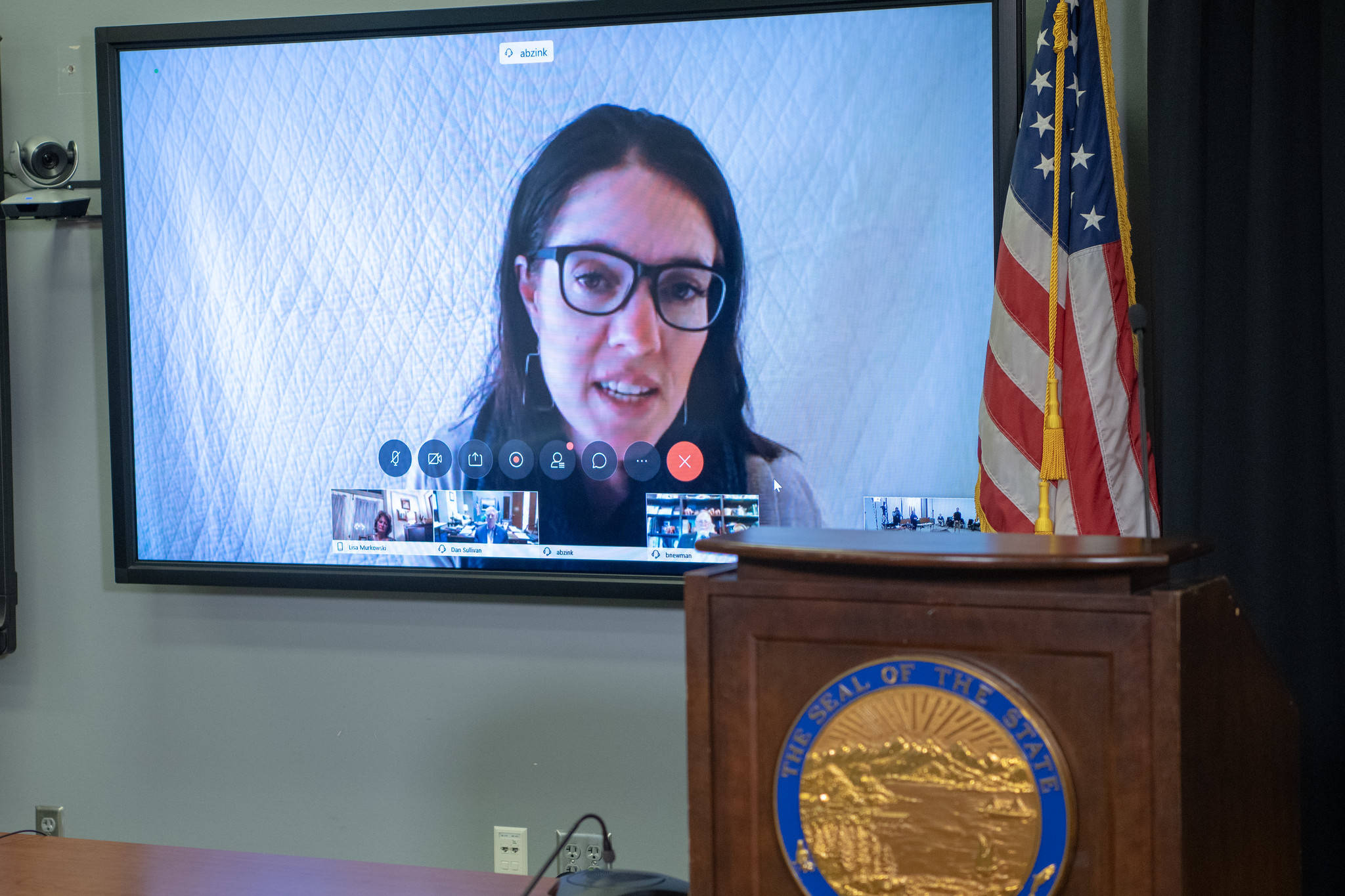The State of Alaska has changed the way it is reporting the COVID-19 outbreak within the state and has rolled out a new website to reflect those changes.
During a Thursday night press conference, Chief Medical Officer Dr. Anne Zink went into detail about the changes in the state’s COVID-19 reporting while also providing information on the scientific models being used for case count projections. Zink also discussed the state’s supply of personal protective equipment.
Before Zink’s presentation on the state’s new website, Gov. Mike Dunleavy gave an update on the current case count for Alaska. Dunleavy initially reported that the total case count was at 151 confirmed positive, but Zink clarified later in the press conference that the total as of 11:59 p.m. Wednesday was 147. The discrepancy in the numbers, Zink explained, was because of the changes in how they are being reported, which went into effect Wednesday night.
The state’s case count moving forward, Zink said, would be based on the numbers reported by the Division of Health and Social Services as of 11:59 p.m. the previous day. Previously, the numbers announced at the governor’s nightly press conference were based on DHSS reports as of 3 p.m. that day.
Three new cases were identified between Wednesday night’s press conference and the new deadline of 11:59 p.m., which brought the total to 147. In addition, Kenai Peninsula Borough Incident Commander Dan Nelson told the Clarion on Thursday that a second Seward resident had been confirmed positive for the disease. This case was not included in the state’s latest numbers because it had been reported after the 11:59 p.m. deadline.
Nine peninsula residents in total have been confirmed positive for the disease as of Thursday night — two in Seward, two in Homer, two in Soldotna, two in Sterling and one in Kenai.
Thirteen people have been hospitalized by the illness, which includes the two patients who have died within the state. Three Alaskans in total have died from the disease, including one Alaska resident who was out of state when they died.
As of Thursday, 5,330 Alaskans have been tested, Dunleavy said. Zink said that the state is working on increasing the testing capabilities within the state, including by giving rural health centers the capacity to process tests, not just collect samples.
“A huge focus for us has been to get testing available to all Alaskans as close as possible to home,” Zink said.
The state also modified the decision that was announced Wednesday restricting bear hunting in the spring. Dunleavy said Alaskans would still be allowed to go bear hunting, but the season is still closed to nonresidents. All hunting activities, other than subsistence, must still conform with the intrastate travel health mandate, which limits in-state travel between communities, according to an April 2 press release from the Alaska Department of Fish and Game. General hunting, including bear hunting, has not been identified as a critical personal need in the context of the travel mandate.
Zink said during Thursday night’s press conference that new information is constantly coming out about COVID-19, and some new data shows additional symptoms beyond what were previously reported. Zink said that patients have reported losing the inability to smell or taste and older patients have reported nausea, vomiting and diarrhea. Reports have shown that the virus can remain on stainless steel and plastic surfaces for several hours and linger in the air after someone sneezes. Zink noted that experts initially thought the virus did not linger on surfaces.
“This is something that’s been very humbling as we continue to learn more about the disease,” Zink said.
In Alaska, about 2% of the tests being collected are coming back positive for the disease, Zink said. Alaska also has the fewest total cases of any other state and is in the top 10 for tests completed per capita.
“The work that Alaskans are doing to flatten the curve is tremendous,” Zink said.
The tests currently being conducted by the state look for the presence of the specific strain of the coronavirus that causes COVID-19, but Zink said that methods of serology testing are currently being developed on a national level that will better assess the spread of the disease within communities. Serology tests, Zink said, look for the presence of antibodies made in response to infections, so those tests would be able to determine if someone has been in contact with the virus even if they didn’t contract the disease.
Visit the State’s new COVID-19 Dashboard here.


